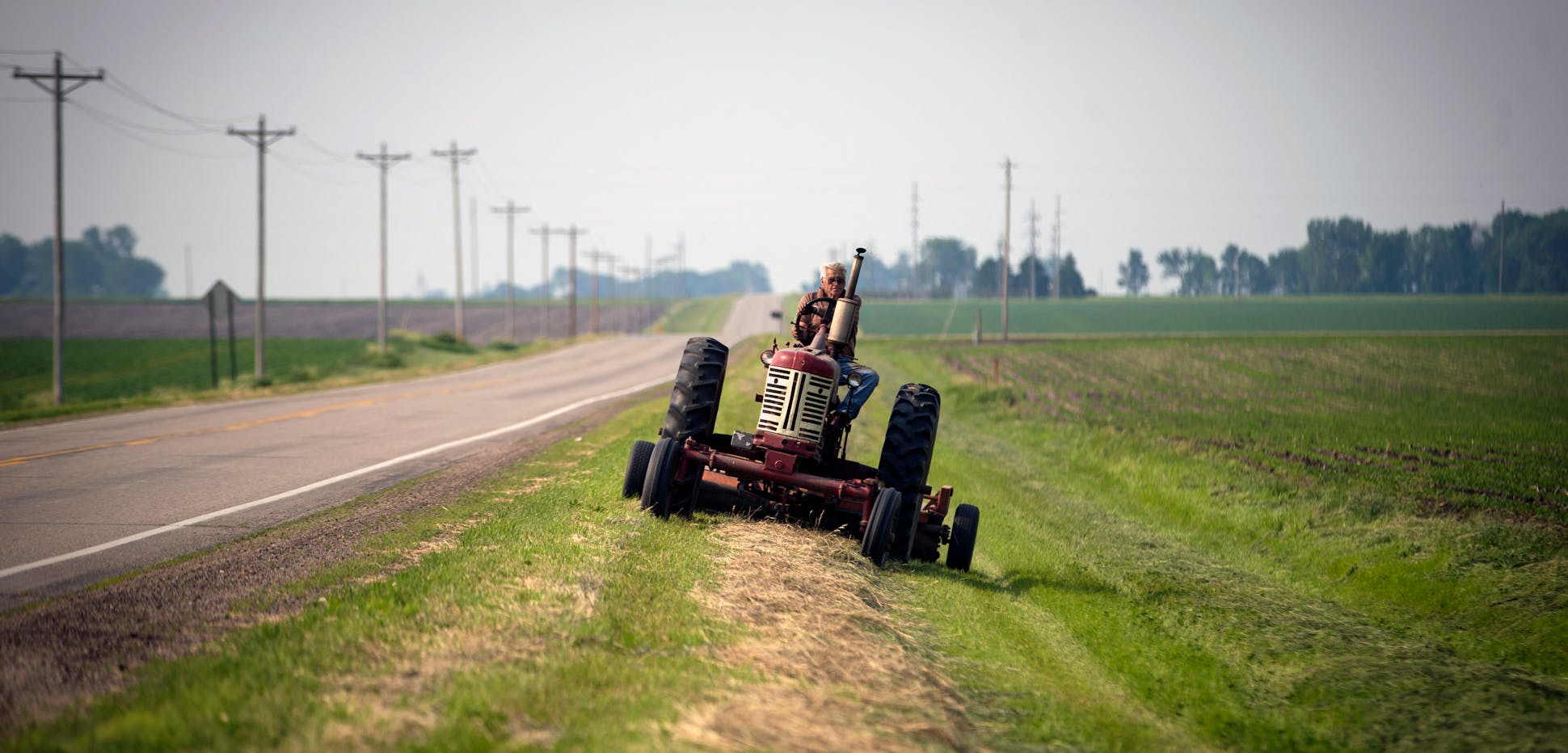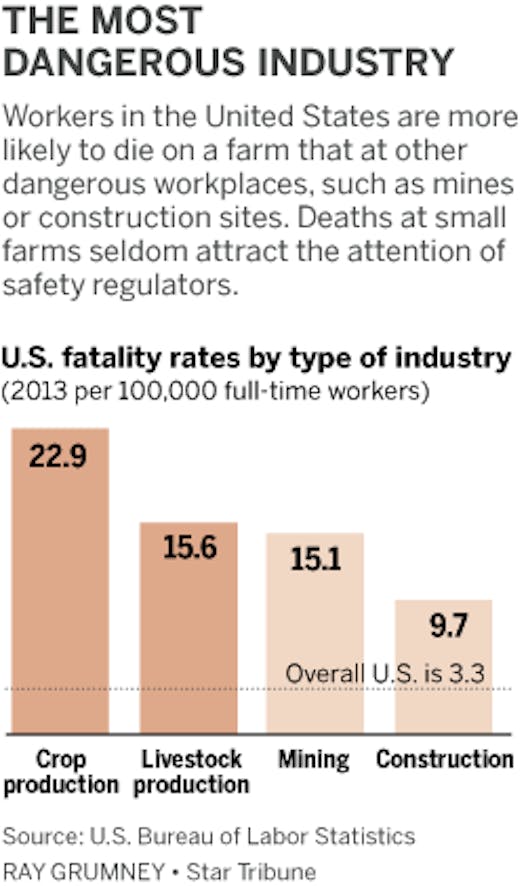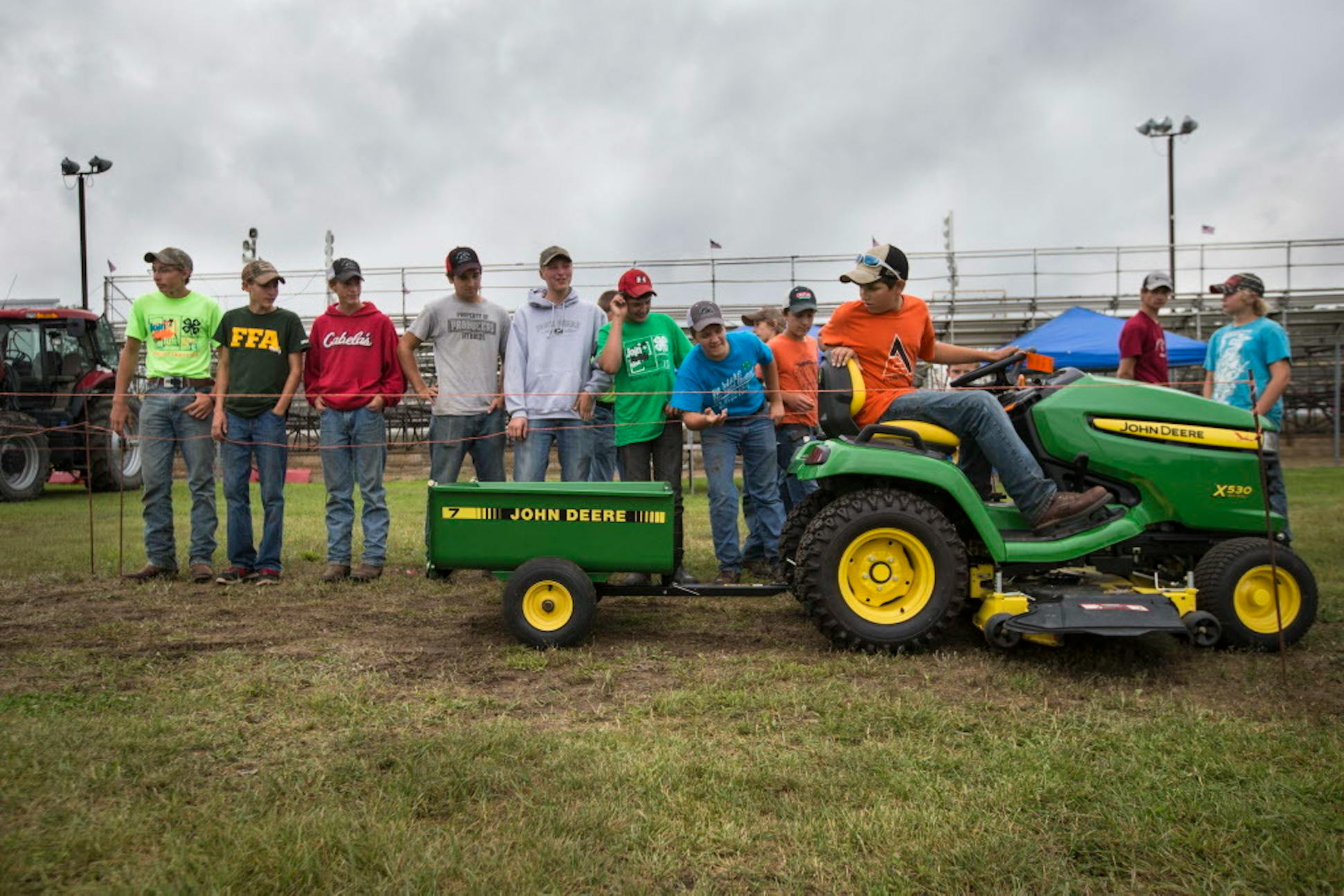Nearly all U.S. workplaces are getting safer – except the family farm. Dangerous practices and equipment, amid lax rules, are driving up deaths.
Richard Rosetter stood inside his 28-foot grain bin and smashed a shovel into the thick layer of ice that covered his corn.
He was in a foul mood. His wife and a neighbor were pestering him, upset that he was working by himself, with no spotter to rescue him if he got trapped.
He had been doing this for 50 years, Rosetter reminded them that cold day in February 2014.
Just before 3 p.m. he realized his mistake. As the corn turned to quicksand beneath Rosetter's feet, he pulled out his cellphone to call for help. But the walls of the bin were too thick. The phone didn't work.
It took rescuers six hours to find his body at the bottom of the bin.
"I think it was totally preventable," said Gene Stengel, a local farm bureau leader who was hired to haul Rosetter's corn that day. "I tear myself up. What could I have done differently?"
At nearly all workplaces in America today, regulators, insurers and workers themselves demand safeguards to make it less likely for a careless mistake to become a tragedy. Coal mines, factories and construction sites are safer as a result.
Not the family farm. Minnesota and other Midwestern states allow small farmers to rely on their own judgment and experience to decide what's safe and what isn't. State and federal budget cuts have slashed farm training and safety programs, even as farm machines have become more powerful and more dangerous.
Deaths are on the rise. More than 210 work-related deaths occurred on Minnesota farms from 2003 to 2013 — an increase of more than 30 percent when compared with a decade earlier. A Star Tribune review of those fatal cases shows that at least two-thirds involved practices that violate federal workplace rules.
Database
- Explore this data, which includes farm deaths since 2004, to learn more about the incidents and the victims.
Unlike at most work sites, state and federal regulators rarely visit farms after a fatality. There is usually no penalty for running a dangerous farm and little financial incentive to improve safety. Steps to address safety problems at the federal level have stalled, most recently in 2014 when Congress forced the federal Occupational Safety and Health Administration to curtail a campaign to reduce grain bin deaths.
Farming remains one of the most dangerous occupations in America, with fatality rates above other high-risk industries such as mining and construction. Altogether, nearly 5,000 people have died in farm accidents since 2003.
Some states on the West Coast and elsewhere are doing more to make farms safe, either through training or inspections that help farmers eliminate hazards and adopt less risky practices. But that effort has not taken hold in the agricultural heartland of the Midwest, where Minnesota and other big farm states produce the bulk of the nation's corn, oats, soybeans and other crops.
Even as work-related deaths on U.S. farms have declined overall in the past decade, that's not the case in Minnesota and other Midwestern states — where half of all U.S. farm deaths occur. The number of farm deaths has risen by double digit numbers over the past decade in Iowa, Michigan, Missouri and North Dakota, according to the most recent federal data. Farm fatalities now account for a quarter of all workplace deaths in Minnesota.
"It worries the heck out of me," said Dave Baker, an assistant dean at the University of Missouri who has been involved in farm safety for 45 years. "Farm safety is not a national priority anymore. We need to have a serious conversation, at the state and federal level, about where we go from here."
Minnesota's rise in farm deaths is an "indictment" of the state's lax approach to farm safety, said former state Agriculture Commissioner Jim Nichols.
"These are scary numbers," said Nichols, a Lincoln County farmer who ran the state agriculture department from 1983 to 1991. "What a terrible thing to pass on to the next generation. We've got to start thinking differently."
Rules aren't enforced
Farmers are supposed to follow the same kind of safety rules that apply on other work sites. But Congress has routinely exempted farms from federal oversight if they do not employ at least 11 workers.
Most fatal accidents happen at these smaller operations, not mega-farms or giant dairies, and receive little scrutiny. In Minnesota, state regulators have investigated just six of 210 farm deaths in recent years, records show. That's a typical rate in the Midwest.
By comparison, state and federal regulators typically review about 90 percent of construction fatalities across the United States.
Roughly half the accidents in Minnesota occurred when a farmer was working alone. In many of those cases, farmers were not found for hours, delaying the arrival of medical attention and possibly turning treatable injuries into fatal ones.
One of the most common mistakes involved malfunctioning equipment. In 25 accidents, farmworkers died while they were trying to fix a broken belt or make other repairs without taking proper precautions, often while the equipment was still running.
In September 2013, Craig Wanous of Hutchinson, Minn., was trying to clear corn stalks out of a clogged chopper, a harvesting machine that cuts corn with three rotating discs packed with blades.
Wanous had borrowed the machine from Alan Juncewski, a lifelong friend, who came out with his uncle David to help Wanous clean up after a storm knocked down some corn, snarling his father's electric fence. But the chopper kept getting jammed.
Alan Juncewski told investigators that he usually turns the machine off in that situation, but he said Wanous didn't want to take the extra time. Alan and his uncle became increasingly agitated as they watched Wanous work.
"Craig, it's gonna get your coat," David Juncewski said, according to the police report. "Get away from them knives."
David Juncewski said he looked away and "boom, it was done." Wanous' unzipped jacket got pulled into the machine and the blades sliced him open.
His last words: "Davy, it got me."
Safety training dwindles
Like other big farm states, Minnesota used to have a highly visible safety program.
Farm kids went to training camps across the state to learn about safety and health. In 2001, 12,000 children attended in 63 counties.
Adults could get similar training, and 500 to 1,000 farmers showed up each year, recalled John Shutske, who oversaw farm safety in Minnesota for nearly 20 years.
That training started to disappear after the terrorist attacks of Sept. 11, 2001. Federal funds for the program were diverted to other areas, Shutske said. Another hit followed in 2003, when state and local officials cut $7 million from the University of Minnesota Extension program budget. That forced the closure of dozens of county offices that used to provide training and promote research-based safety practices.
Today, tractor training is available to high school students in just two of the state's 87 counties. Extension offers no safety programs for adults.
Shutske's position has been vacant since 2008, when he quit to become an administrator at the University of Wisconsin. The job of overseeing farm safety also has been eliminated in many other big farm states.
"I think it is absolutely ludicrous that we have states like Minnesota that don't have a farm safety specialist, or someone who focuses on rural health and safety issues," said Purdue University Prof. Bill Field, who promotes farm safety in Indiana.
As states moved away from farm safety, federal officials created 10 regional safety centers. The sites have received more than $200 million from the National Institute for Occupational Safety and Health (NIOSH) since 1990 to find ways to prevent farm accidents and improve the health of agricultural workers.
But federal reviews have faulted the centers for failing to adequately monitor farm accidents and for providing insufficient assistance to farmers. President Obama has repeatedly proposed eliminating the centers, but Congress has restored the funding in each of the past five years.
The four-year-old center in Minnesota is working on seven research projects, including one on the prevalence of antibiotic-resistant infections among swine veterinarians. None of the projects involves crop production, which accounted for three-quarters of Minnesota farm deaths in the past decade.
Center director Bruce Alexander, a public health professor at the University of Minnesota, said he focuses on unique projects other centers aren't pursuing.
"We never feel like we're doing enough. We never feel like we have enough to work with," said Alexander, whose center receives $1.7 million annually in federal funds. "Even though it sounds like a lot of money, it gets spread out very quickly on all these different topics."
In response to questions from the Star Tribune, NIOSH spokeswoman Stephanie Stevens said agency officials believe that farm fatalities in the Midwest "have not risen significantly." Stevens said the federal agency has made real progress in addressing weaknesses the federal reviews identified. She said the regional centers are "attuned to emerging concerns" and frequently collaborate on topics that impact large numbers of farmers, such as tractor rollovers.
The federal safety institute supports workplace training, but several directors of the regional centers said it is not their mission to teach farmers how to avoid accidents. John May, the founder and longtime director of the federal center in New York, dismissed such efforts as a "waste of time" because there is no proof they change behavior.
Fred Gerr, director of the Iowa center, takes the same position. "In general, farmers die knowing quite well they are doing something that is potentially dangerous."
That view is not universal. Some scientists who have analyzed farm deaths say it is wrong to conclude that training doesn't work simply because some farmers choose to ignore the risks.
In Wisconsin, which has a $75,000 budget for agricultural safety, farm deaths have dropped 16 percent in the past decade, even though the state faces the same type of agricultural hazards as Minnesota.
Cheryl Skjolaas, the state's farm safety coordinator, credits that decline to Wisconsin's approach, which includes a requirement that children younger than 16 complete a safety course before they can legally operate a tractor or other farm machines on a public road.
More than 300 children take the class each year.
Skjolaas said the training doesn't just help teenagers. "I remember one case where the grandfather put the [safety] shields back on his equipment because of what his grandkids learned."
Dave Frederickson, commissioner of the Minnesota Department of Agriculture, said the issue of farm safety has been "pushed off to the side" in Minnesota.
"Obviously, we need to do something about this," said Frederickson, a longtime farmer. "What has driven farm policy for many years have been economic issues, and I feel that is wrong. … The question is, how do we meet the safety concerns placed on modern agriculture?"
Culture of self-reliance
he nature of farm work can sometimes make safety a secondary concern. The priority is to get the job done.
In 2013, Al Fenton brought his 2-year-old son to work at a New Richland hog farm because his wife had pneumonia and there was no one else to watch the boy.
Fenton was supposed to be off, but his boss, Paul Koziolek, kept calling. It had snowed, and Koziolek wanted Fenton to use a skid loader to plow a path for the feed truck that was coming.
Koziolek said he never warned Fenton against riding with his son, even though carrying passengers is a flagrant hazard.
"If Benny was with him, I should have said, 'Oh, forget it. Don't do it.' But I always had a tough time doing that," Koziolek said. "Because when you get the young kids involved in agriculture, to me, it's something special."
While Fenton worked, Benny stood on the floor of the skid loader, between his father's legs. Fenton was finishing up the job when he hit a bump. Benny fell forward with his head outside the open cab. The descending bucket crushed his skull.
"Why wasn't it me? Why did I cut his life short?" said Fenton, his eyes wet with tears.
It was the second loss for Fenton's family. His stepson Dylan died three years earlier when a grain truck smashed into his ATV while the 13-year-old was collecting the mail.
Fenton said he learned how to operate a skid loader at the age of 10, by sitting in the lap of an adult and watching how the controls worked. He said he never took a class to prove he could operate the machine properly.
"They don't teach farm safety in the schools anymore," said Fenton, 40. "I work at QC [a farm supply store] now and you can't operate a forklift unless you're certified. There are just too many assumptions in farming. It's like, you grew up on a farm, so they think you know everything."
Regulation prompts backlash
One of the most dangerous places to work on a farm is a grain bin. Throughout the Midwest, fire departments get calls for help whenever a farmer gets trapped after going inside a bin to break up clumps of moldy corn or soybeans.
At least 17 farmworkers in Minnesota have died since 2004 while working inside the bins, records show.
In 2010, the Chicago office of the federal Occupational Safety and Health Administration noticed that such accidents were at record levels. The agency stepped up enforcement, starting with a warning letter to 13,000 grain bin operators, including 180 sites in Minnesota.
Regulators also tripled the number of inspections and began issuing unusually large penalties for violators, including a $555,000 fine in the deaths of two teenage workers in Illinois.
Agency officials say the campaign helped reduce the number of grain bin entrapments from a record of 59 in 2010 to 21 in 2012.
But Congress accused the agency of exceeding its authority by targeting some farms that were too small to qualify for enforcement. U.S. Rep. John Kline, R-Minn., was among the critics, calling the agency's efforts "misguided."
Kline declined repeated requests for an interview for this series.
In early 2014, after the uproar led to a congressional hearing, the safety agency backpedaled, declaring that small farms would not be subject to enforcement. In 2014, grain entrapments climbed to 38, the highest level since 2010, according to researchers at Purdue University.
One of the victims was Rosetter, who entered his bin without a harness or rope even though he knew there were risks. He had told a group of elementary school students in 2003 that such aids could get them to safety if they got stuck.
But his wife, Joan Rosetter, said he often worked alone despite her protests. She wishes manufacturers would include safety gear when they build new grain bins.
"I'm like other farm wives," she said. "It wasn't just him that did this."
Oversight yields benefits
When inspectors intervene on a farm, the impact can be dramatic.
At Riverview Farms in western Minnesota, visitors can't help but notice the bright yellow safety vests. Almost all of the 750 employees wear them.
It's the most visible change, but probably not the Morris company's most important safety improvement, since Alfredo Cabrera-Martinez crashed his ATV into a tree and fractured his skull while working on Riverview's manure crew in 2011.
The accident is one of the handful of fatalities that drew a visit from the occupational safety and health division of the Minnesota Department of Labor and Industry.
After discovering that Cabrera-Martinez never received training on how to operate an ATV and never received a helmet, the state fined Riverview a total of $30,400 for safety violations.
The action galvanized the company, which is Minnesota's largest dairy operation with more than 30,000 cows and 9,000 acres of farmland.
Managers began stopping any worker caught doing something unsafe and explaining what they should do differently. Helmets were placed on every ATV, and workers were encouraged to wear them. The farm provided safety glasses to employees who are exposed to flying manure. Training became mandatory for all employees using ATVs, and a skid-steer course is in the works.
Since safety became a major part of the company's culture, Riverview's injury rate has dropped by more than 50 percent, said Kevin Wulf, a human resources manager with Riverview.
"Nobody was born knowing what safe is," Wulf said. "We have to be taught."
jeff.meitrodt@startribune.com 612-673-4132ABOUT THIS SERIES
In researching this series, the Star Tribune obtained records from the U.S. Bureau of Labor Statistics for all deaths related to crop farming and livestock production from 1992 to 2013, the most recent data available. We excluded cases that BLS officials classified as unspecified because they could not determine whether the deaths involved farming or other types of agricultural operations, such as logging or fishing. The Star Tribune also reviewed thousands of death certificates to identify possible farming accidents in Minnesota. We obtained investigative records from sheriff's departments that responded to those accidents, as well as reports from the Minnesota Department of Labor and Industry and the Minnesota State Patrol. We also interviewed more than 100 people who lost a friend, co-worker or relative in a farming accident.
The Star Tribune calculated state fatality rates by comparing the number of farm deaths from 2003-2013 to the total number of farm workers in each state, including all operators, hired laborers, migrant workers and unpaid laborers. Worker data came from the 2012 census conducted by the U.S. Department of Agriculture.










